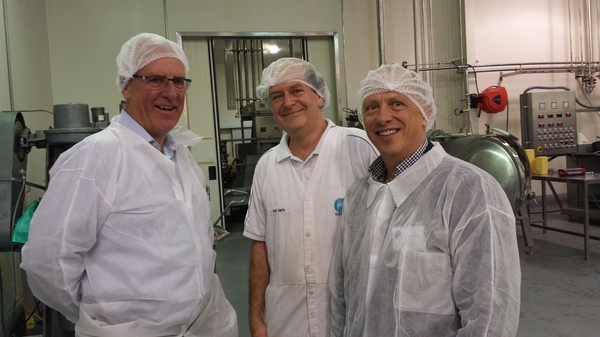
MILK from Gippsland has its own fingerprint – the trace elements it contains makes it different to milk from cows in northern and western Victoria.
CSIRO scientist Dr Roderick Williams explained that testing for components in Victorian milk had revealed geographical clusters.
And people who drink predominantly Gippsland milk throughout their life will have the legacy in their bones, he added.
“Milk carries a geographic fingerprint of its area from the minerals that are taken up in pasture and then go into the animal before being expressed in the milk,” he said.
“It will be in your body’s make-up as well – as an archaeologist might discover sometime in the future.”
Dr Williams was among scientists addressing a group of food industry representatives from the state’s east.
The visit, organised by Agribusiness Gippsland, saw more than 30 people go behind the scenes at CSIRO’s Food Innovation Centre in Werribee on 28 April.
The day-long session aimed to introduce Gippsland’s food processors, industry consultants and shire economic development officers to the latest technologies.
A team from Bairnsdale flew to Melbourne for the event, which also attracted CSIRO scientists from interstate.
The visitors heard from experts researching how to extend the shelf life of foods, how to reduce water and power use in food processing and developing new products from otherwise wasted foods.
Dr Williams explained that research into the composition of milk supplied by Agriculture Victoria’s research farm at Ellinbank could lead to a 13 per cent reduction in energy used to dry milk.
Drying milk into powder is the major activity for dairy exporters, but spray dryers demand 70 per cent of the energy used in dairy processing.
Drying time is determined by the fluidity (or viscosity) of milk and up to 4 per cent of that equation is determined by microscopic particles called casein micelles.
The size of micelles in the milk varies between cows, meaning farmers could selectively breed cows to produce dryer-friendly, low-energy milk, he suggested.
“There is a direct genetic link between casein micelle size and the cow,” he said.
Micelles also affect the initial renneting phase in cheese making and also spoilage rates in UHT milk over time, he added.
He also introduced the visitors to pulsed electronic field – a new technology that extends milk shelf life without affecting taste or nutritive values.
The technology is yet to be introduced commercially, although the Werribee facility has a pilot unit.
Paul Ford, chair of Agribusiness Gippsland said: “Both the Federal and Victorian Government have identified that building a vibrant food and fibre sector is key to growth, jobs and prosperity of regional Australia.
“This sector represents over half the value-add of the whole greater Gippsland region.
“Growth of the sector in Gippsland will be most effective when industry, government and world-class innovation centres are networked and working with a common purpose.
“This visit was all about linking greater Gippsland’s food and fibre processors with Australia’s largest centre of excellence in food science.
“Agribusiness Gippsland is committed to continue developing these networks.”





